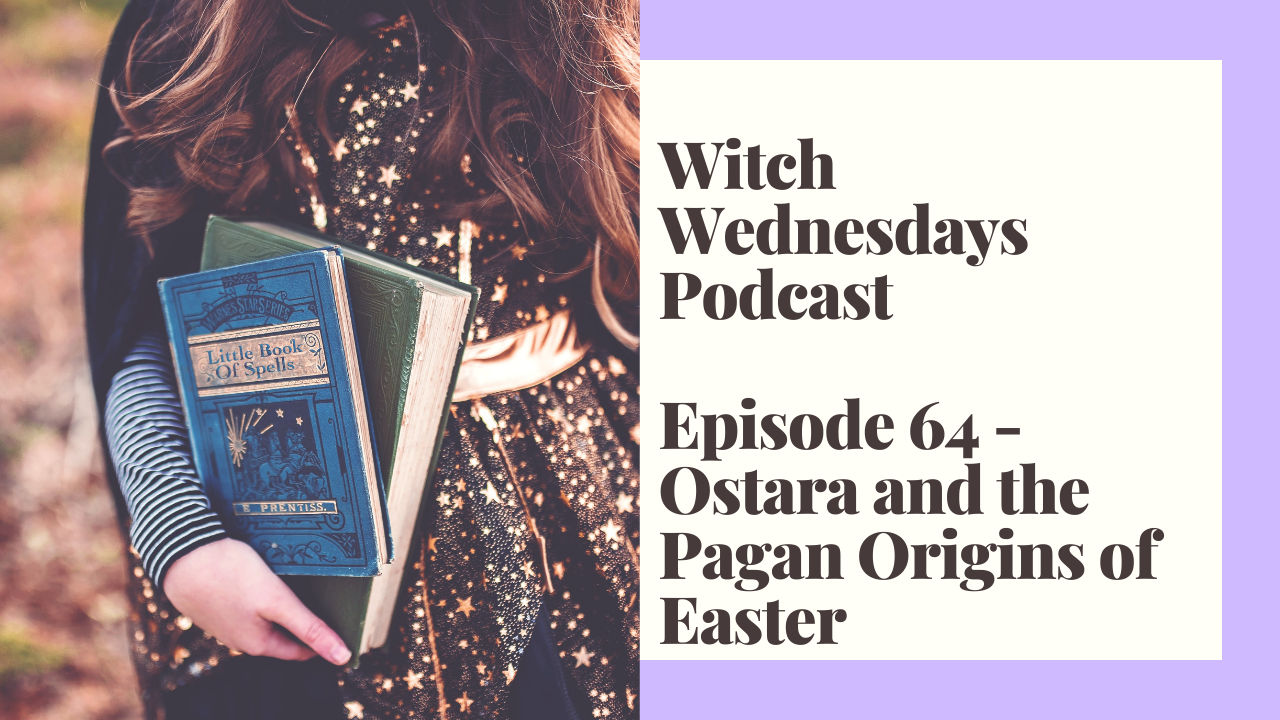Notes from today's podcast:
History and Traditions of Ostara
Ostara falls on March 20th this year and it’s also known as the vernal or spring equinox. It is widely celebrated by wiccans and some pagans but definitely not everyone. Of course the core point of the wheel of the year is recognizing and appreciating seasonal changes, and Ostara is all things spring. It is connected to fertility as well as the concept of balance since it is one of the two equinoxes, where day and night are equal in length (the other being Mabon in autumn.) Ostara is also related to renewal and hope.
Historically, many pagans celebrated festivals for the spring equinox and most were associated with fertility. One of these festivals was called Eostre. Eostre was a northern European goddess of fertility and it’s clear that that’s where the name Easter came from.
Goddess Eostre aka Ostara
Eostre is the Germanic goddess of spring and the dawn. Her history as a deity that people worshiped is uncertain. She is mentioned in the writings of an 8th century monk, who reported that pagan anglosaxans in Northumbria (now known as northern England and south east Scotland) held festivals in her honor during the month of April. But that’s about the only historical mention, leading some scholars to believe that this monk invented her.
Regardless, by the 19th century she had become a large part of Germanic mythology and was added to lots of german literature and paintings. The brothers Grimm wrote a lot about this mythology and in particular Eostre, connecting her with dawn and light returning to the world, making the connection to Jesus as the light of the world.
On the old Germanic calendar, the equivalent month to April was Ostar-manod or ‘Easter month.’ As a holiday, Easter predates Christianity by quite a bit. Originally, Easter was the name for the spring equinox. The date of Christian easter changes each year because it’s based on a more pagan-style solar calendar. So easter, the christian holiday, falls on the Sunday after the first full moon after the spring equinox.
Most of the symbolism around Easter comes from the pagan celebrations of the spring equinox.
Painting easter eggs bright colors - reflect the spring flowers blossoming.
Egg itself - connected to the fact that chickens are returning to egg laying schedule, a symbol of rebirth.
Easter bunny - symbol of fertility. Hares are also associated with the moon and lunar goddesses.
Wiccan Traditions
Like we talked about in last week’s episode, the goddess is eternally present throughout the wheel of the year and the god goes through life stages of birth, life, death, and re-birth. So at this time of year, the god is a youth coming into maturity before marrying at the next sabbat, which is Beltane.
It is important to note here that historically there is no record that one group of pagans celebrated all 8 Sabbats that are traditionally celebrated by Wiccians today. While Wiccans do celebrate these Sabbats the traditions they are based on can vary widely from Sect to Sect.
In general the focus is on the Spring Maiden and Horned God: As Ostara is the burgeoning of fertility, the Triple Goddess we discussed in the Wiccan deities episode is represented by her Maiden aspect during Ostara. Full of potential fertility, growth, and readiness to be (re)born.
This holiday is all about the shift from winter to summer, between waning of the power of the God which is giving way to the rising power of the Goddess. It is about balance and about coming change, the triumph of light over dark, warmth over cold, day over night, and new life. Another great time to do some spring cleaning, both physically and mentally.
Celebrations are full of chicks, eggs, and bunnies which are all symbols of rebirth, renewal, and fertility. (Rabbits because they multiple quickly and in large numbers.) Dyeing eggs, egg hunts, and egg races are all great ways to celebrate with family and friends. Make hot cross buns and honey cakes. Honey is often placed on altars as in the Northern Hemisphere this is when bees start to become active again after their winter hibernation. Blessing the seeds to be planted and seedlings that have been planted during Imbolc can help you connect to nature. Depending on where you live this is the time you can transfer the seedlings you have started inside at Imbolc to outside pots.


No comments: